Cosmetic dentistry has advanced significantly in recent years, providing people with effective options to improve their smiles while maintaining oral health. As technology and patient preferences evolve, several key trends are emerging that promise more precise, efficient, and natural-looking results. This article examines the top five trends in the field for 2025, drawing on current developments for those considering treatments.
For a cosmetic dentist’s insight, Dr. Sahil Patel of MaryleboneSmileClinic offers this advice: “Patients today benefit from innovations that blend aesthetics with functionality, ensuring long-term dental well-being. When selecting procedures, it is essential to consult a qualified cosmetic dentist, London-based or otherwise, who can tailor recommendations to individual needs. To explore comprehensive options and schedule a consultation, visit this site at MaryleboneSmileClinic.co.uk, where detailed information on advanced treatments is available.”
Integration of Digital Technologies
One prominent trend in cosmetic dentistry involves the widespread adoption of digital technologies, such as Digital Smile Design (DSD) and 3D printing. These tools allow practitioners to create highly accurate previews of potential outcomes before any procedure begins. DSD, for instance, uses software to simulate smile transformations based on facial features, enabling patients to visualise changes in real time. This approach reduces uncertainty and enhances communication between dentists and patients.
In practice, digital impressions replace traditional moulds, offering greater comfort and precision. Scanners capture detailed images of the teeth and gums, which are then used to design restorations like veneers or crowns. 3D printing further accelerates this process by producing custom models or even final prosthetics in a matter of hours. This efficiency not only shortens treatment times but also minimises errors, leading to better-fitting results.
The integration of artificial intelligence (AI) is another facet of this trend. AI algorithms analyse patient data to suggest optimal treatment plans, considering factors such as bone structure and gum health. For example, in orthodontics, AI-powered aligners adjust more dynamically to tooth movement, improving alignment outcomes. Studies indicate that digitally assisted procedures can increase patient satisfaction by up to 30 percent, as they provide predictable results.
This trend is particularly relevant for busy professionals who seek quick yet reliable enhancements. In urban settings, where access to specialised care is readily available, patients can expect these technologies to become standard. Dentists equipped with such tools can offer consultations that incorporate virtual try-ons, helping individuals make informed decisions. Overall, digital technologies are transforming cosmetic dentistry into a more patient-centred discipline, emphasising precision and personalisation.
As adoption grows, costs may decrease, making these advancements accessible to a wider audience. However, it remains important for practitioners to undergo proper training to maximise benefits. Patients should inquire about a clinic’s technological capabilities during initial visits to ensure they receive the most up-to-date care.
Rise of Minimally Invasive Techniques
Minimally invasive techniques are gaining traction in cosmetic dentistry, focusing on preserving as much natural tooth structure as possible. This shift away from more aggressive methods reflects a broader emphasis on long-term oral health. Procedures like no-prep or micro-veneers exemplify this trend, where thin layers of porcelain are bonded to teeth with minimal enamel removal.
Such approaches reduce the risk of sensitivity and complications associated with traditional veneers, which often require significant tooth preparation. Instead, advanced bonding agents and materials allow for durable attachments that mimic natural enamel. Laser dentistry plays a key role here, enabling precise reshaping of gums or removal of decay without drills, which can be less traumatic for patients.
In teeth straightening, clear aligners have evolved to incorporate minimally invasive elements, such as attachments that guide movement without brackets. This not only speeds up treatment but also avoids the aesthetic drawbacks of metal braces. Research shows that minimally invasive methods can extend the longevity of natural teeth, as they avoid unnecessary weakening.
For those concerned about recovery time, these techniques offer shorter downtime, often allowing individuals to resume normal activities immediately. In a city like London, where many seek discreet treatments, cosmetic dentists are increasingly offering these options to cater to diverse needs. The trend aligns with patient demands for subtle enhancements that enhance confidence without overt changes.
Furthermore, biocompatibility is enhanced through the use of materials that integrate seamlessly with existing dentition. Dentists now employ diagnostic tools like intraoral cameras to plan interventions with pinpoint accuracy, ensuring interventions are as conservative as possible. This methodical approach contributes to fewer revisions and greater overall satisfaction.
As this trend continues, education on maintenance becomes crucial. Patients are advised to follow rigorous oral hygiene routines to sustain results, including regular professional cleanings. Ultimately, minimally invasive techniques represent a sustainable path forward in cosmetic dentistry, balancing beauty with biological integrity.
Advancements in Teeth Whitening
Teeth whitening remains a cornerstone of cosmetic dentistry, but 2025 sees advancements that prioritise safety and efficacy. New formulations address common issues like sensitivity, using desensitising agents integrated into gels. Laser-activated systems accelerate the process, achieving noticeable results in a single session while minimising enamel damage.
These innovations stem from research into peroxide alternatives, such as enzyme-based whiteners that break down stains gently. Home kits have also improved, with custom-fitted trays and app-guided applications ensuring even coverage. Professional supervision is recommended to tailor strength and duration to individual enamel types.
The trend extends to combination therapies, where whitening is paired with other procedures for comprehensive smile makeovers. For instance, post-orthodontic whitening enhances alignment results, creating a brighter, more uniform appearance. Data from dental associations indicate a rise in demand for these integrated treatments, driven by social media influences.
In regions with high fluoride exposure, like parts of the UK, customised whitening protocols help counteract discolouration effectively. A cosmetic dentist London practice might offer in-office sessions using LED lights, which boost hydrogen peroxide activation without heat-related discomfort.
Maintenance products, such as whitening toothpastes with micro-abrasives, support long-term results. Patients are encouraged to avoid staining foods and beverages post-treatment to prolong effects. This proactive stance empowers individuals to manage their oral aesthetics independently.
Overall, these advancements make whitening more inclusive, suitable for a broader range of ages and conditions. As technology refines, expect further reductions in side effects, solidifying whitening’s role in routine dental care.
Focus on Sustainability and Biocompatibility
Sustainability is emerging as a critical trend in cosmetic dentistry, with an emphasis on eco-friendly materials and practices. Biocompatible composites, derived from recyclable sources, are replacing traditional amalgams, reducing environmental impact. These materials not only degrade less harmfully but also promote better integration with bodily tissues.
Clinics are adopting green protocols, such as digital workflows that minimise waste from physical impressions. Water-saving equipment and energy-efficient sterilisation further align the field with environmental standards. Patients increasingly seek treatments that reflect their values, prompting dentists to source ethically produced prosthetics.
In veneer production, plant-based resins offer durability comparable to synthetics while being hypoallergenic. This reduces allergic reactions and supports oral microbiome health. Studies highlight that biocompatible options can lower inflammation risks, benefiting overall wellness.
For London residents, where environmental awareness is high, a cosmetic dentist London specialist can provide consultations on sustainable choices. This includes discussing lifecycle assessments of materials to inform decisions.
The trend also encompasses recycling programs for old restorations, closing the loop on resource use. Dentists educate patients on these aspects, fostering informed participation.
As regulations tighten, expect more certifications for green practices. This evolution ensures cosmetic dentistry contributes positively to planetary health without compromising quality.
Personalized and Holistic Approaches
Personalised care defines the fifth trend, integrating holistic principles into cosmetic dentistry. Treatments now consider overall health, lifestyle, and genetics for tailored plans. Genetic testing, for example, predicts enamel strength, guiding material selection.
Holistic approaches address underlying issues like bruxism or nutrition that affect smile longevity. Nutrition counselling complements procedures, promoting diets that strengthen teeth naturally. Mindfulness techniques are incorporated to reduce anxiety during visits.
In multidisciplinary teams, dentists collaborate with nutritionists and therapists for comprehensive outcomes. This is evident in smile rehabilitation programs that factor in facial harmony and emotional well-being.
For urban dwellers, personalised plans accommodate hectic schedules with phased treatments. A cosmetic dentist London clinic might use biometric data for custom aligners, ensuring comfort and efficacy.
Patient involvement is key, with shared decision-making tools enhancing trust. Outcomes show improved adherence and satisfaction when care is individualised.
This trend underscores dentistry’s role in broader health, encouraging preventive strategies alongside aesthetics.
In summary, these five trends—digital integration, minimal invasion, whitening advancements, sustainability, and personalisation—signal a progressive era in cosmetic dentistry. By staying informed, individuals can select options that align with their goals, supported by professional guidance.


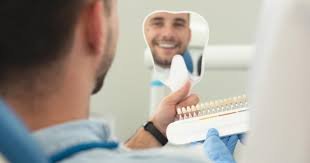










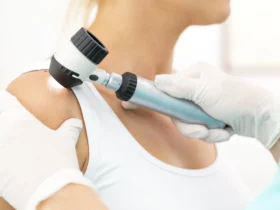
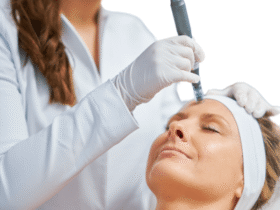
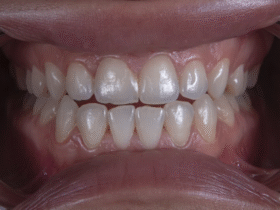
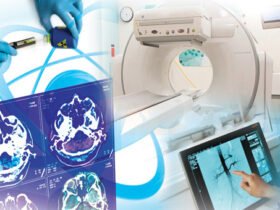
Leave a Reply